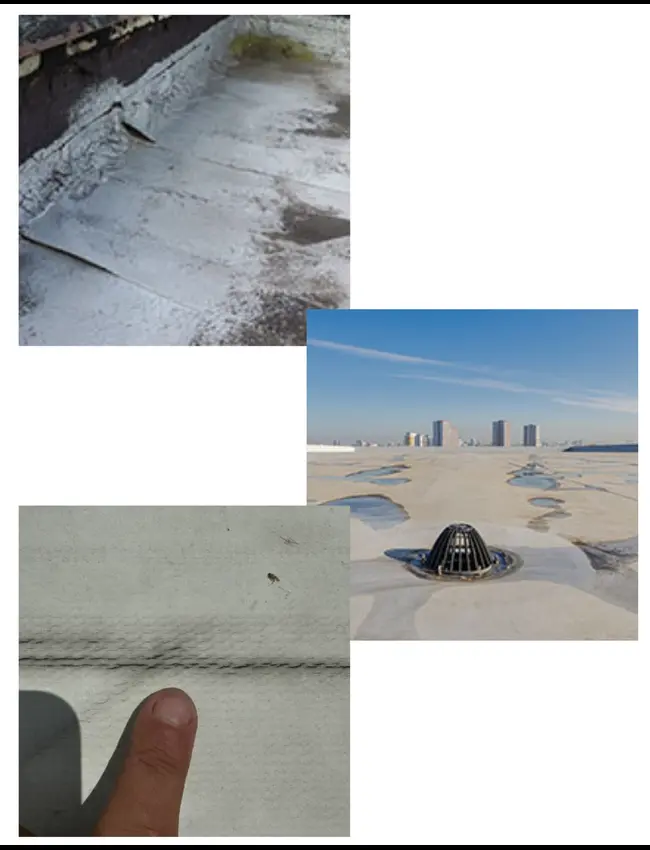Texas summers are infamous for their blistering heat, while winters can surprise us with sudden freezes. These drastic temperature swings create a phenomenon known as thermal shock, which poses a significant threat to flat roofs across the state.
Thermal shock occurs when roofing materials rapidly expand and contract due to abrupt temperature changes. Over time, this cycle weakens the structural integrity of flat roofs, leading to costly damage and repairs.
Flat roofs are especially common in commercial and industrial buildings throughout Texas, making this issue even more pressing for property managers, facility directors, and building owners. In this post, we’ll explore how thermal shock impacts flat roofs, the warning signs to watch for, and what steps you can take to protect your building.
Understanding Thermal Shock and Its Effects
What Is Thermal Shock?
Thermal shock refers to the rapid expansion and contraction of materials caused by sudden temperature shifts. In Texas, temperatures can swing from 100°F during the day to freezing overnight, especially during seasonal changes.
For flat roofs, these fluctuations place intense stress on roofing systems, causing wear and tear that isn’t immediately visible but worsens over time.
How Temperature Extremes can Affect Flat Roofs
- Expansion and Contraction:
- Roofing materials expand as they heat up and contract when they cool down.
- Repeated cycles weaken the material’s structure, leading to small cracks and splits.
- Material Fatigue:
- Continuous expansion and contraction create stress fractures, causing materials to lose their elasticity and strength.
- Water Infiltration:
- Cracks and fissures allow water to seep in, leading to leaks, mold growth, and internal damage.
- Once water penetrates the roof membrane, repairs can become complicated and expensive.
- Membrane Failure:
- Different flat roofing materials react differently to thermal shock:
- TPO and EPDM membranes can become brittle over time.
- Modified bitumen may crack or develop blisters.
- Metal roofs expand and contract significantly, causing seams to separate and screws to loosen.
- Different flat roofing materials react differently to thermal shock:
Common Signs of Thermal Shock Damage
Thermal shock damage isn’t always immediately obvious, but there are key indicators to watch for:
How a Roof Coating Can Save you $1,000’s

Visible Signs of thermal roof damage
- Cracks and Fissures: Small cracks may appear in the roofing membrane.
- Blisters and Bubbles: Trapped moisture beneath the membrane causes swelling.
- Pooling Water: Low spots form as materials warp, allowing water to accumulate.
- Loose or Displaced Flashing: Edges and seams may lift due to movement, compromising waterproofing.
Indirect Signs
- Higher Energy Bills: Damaged insulation or roof layers reduce energy efficiency.
- Mold and Mildew Growth: Leaks create moisture, leading to mold inside the building.
- Sagging or Uneven Roof Surfaces: Structural damage can lead to areas that dip or bow.
If you’ve noticed any of these signs, it’s crucial to schedule a professional roof inspection immediately.
Mitigating the Effects of Thermal Shock
1. Professional Roof Installation
- Ensure proper installation using high-quality, flexible materials that can handle temperature shifts.
- Include adequate insulation and ventilation to reduce internal temperature fluctuations.
2. Regular Roof Inspections and Maintenance
- Conduct semi-annual inspections (especially before summer and winter) to catch damage early.
- Perform preventative maintenance to repair cracks, reseal seams, and reinforce weak areas.
3. Choose Thermal Shock-Resistant Materials
- Opt for single-ply membranes like TPO and EPDM, which are engineered for flexibility.
- Consider modified bitumen roofing, which provides excellent durability in extreme weather conditions.
- For metal roofs, use expandable fasteners and coatings that resist thermal movement.
4. Apply Reflective Roof Coatings
- Silicone and acrylic roof coatings reflect sunlight, reducing heat absorption and temperature swings.
- Coatings also act as a waterproof barrier, protecting against leaks and extending the roof’s lifespan.
At Commercial Roof Repair Solutions, we specialize in silicone and acrylic roof restoration for commercial builds that combat thermal shock and improve energy efficiency.
Conclusion
Thermal shock is an unavoidable reality for flat roofs in Texas, but it doesn’t have to lead to costly repairs and premature replacements. With proactive maintenance, quality materials, and reflective coatings, you can protect your roof from the damaging effects of rapid temperature changes.
Don’t wait until small cracks turn into expensive repairs—schedule a professional roof inspection today! At Commercial Roof Repair Solutions, we’re here to help you extend the life of your roof and keep your building protected year-round.
Call Us Today – 281-928-4428
Serving Houston and Surrounding Areas, Including:
- Pasadena, Sugar Land, Pearland, The Woodlands, and Baytown
- Conroe, League City, Missouri City, and Galveston
Protect your investment—contact Commercial Roof Repair Solutions for your free consultation!
#Flat Roof Resilience, #weather-related roofing problems, #silicone roof coatings in Houston, #Acrylic Roof Restoration for Commercial Buildings
More from Us!
Does You’re Roof need a Commercial Roof Tune Up?
We Need More Houston Roofing Experts Like This Guy!

